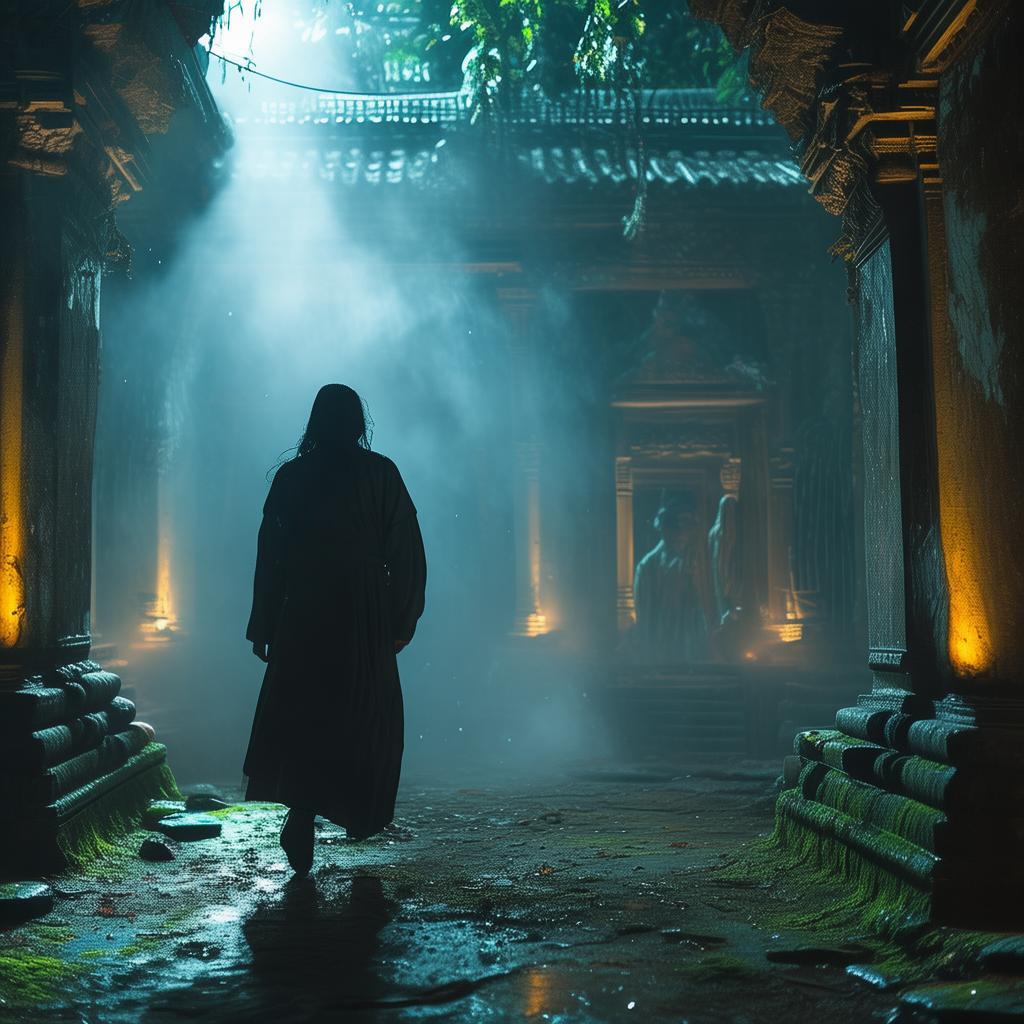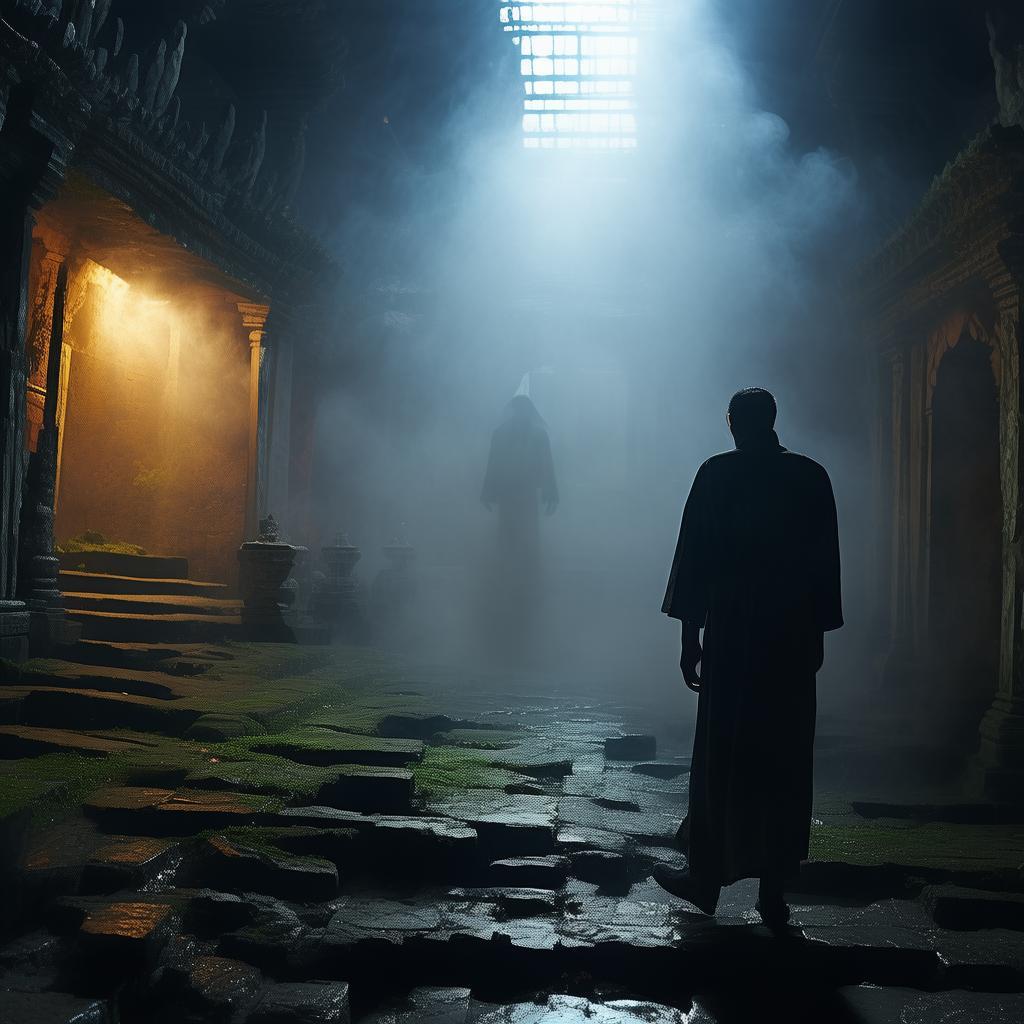The Vanishing Act: A Haunting Reenactment
In the heart of the old town of Shadowwood, nestled between cobblestone streets and ancient oaks, stood the Haunted Stage, a decrepit theater that whispered tales of its long-forgotten past. The theater was a relic of yesteryears, with peeling wallpaper and creaky wooden floors that seemed to groan with every step. Despite its dilapidated state, it was a place where actors and actresses flocked, drawn by its mysterious allure and the promise of a legendary performance.
The theater's latest production, "The Curse of the Vanishing Players," was set to open in two days. The cast, a motley crew of seasoned thespians and hopeful newcomers, were eager to bring the haunting story to life. The play was based on a true story of a troupe that vanished without a trace during a performance in the 1920s. As the actors delved deeper into their roles, they uncovered a web of secrets, lies, and unsolved mysteries that seemed to echo through the very walls of the Haunted Stage.
On the evening of the first rehearsal, as the actors gathered in the dimly lit backstage area, a chill ran through the air. The theater was alive with the rustling of costumes and the murmur of voices. Suddenly, the lights flickered, casting eerie shadows across the room. The actors exchanged nervous glances, their excitement giving way to a sense of unease.
One by one, the actors disappeared from the backstage area. The sound of their footsteps echoed through the empty space, only to fade into silence. The remaining actors, frozen in place, looked at each other in horror. They called out, but their voices were swallowed by the darkness. In a matter of moments, the entire cast had vanished.
The stage manager, an old man named Thomas, raced backstage to investigate. He found the empty costumes scattered about, as if someone had been searching through them. He ran through the corridors, his footsteps echoing through the empty theater. He reached the dressing rooms and found the doors locked from the inside. He pounded on the doors, but there was no response.
As the night wore on, more people arrived to check on the cast. The theater's owner, a stern and secretive man named Mr. Blackwood, arrived first. He scanned the room with a worried expression, his eyes lingering on the empty dressing rooms. He called for a key, but the locks remained steadfast.
The next day, the police were called to the scene. They searched the theater from top to bottom, finding no trace of the missing actors. The police theorized that the disappearances could be due to a prank or a misunderstanding, but the evidence seemed to suggest otherwise. The costumes were scattered in a specific pattern, as if someone had been searching for something.
As the investigation continued, the actors' families grew increasingly anxious. They demanded answers from Mr. Blackwood, who remained evasive and secretive. He claimed to have no idea what had happened to the actors, but the weight of his silence was suffocating.
Days turned into weeks, and the mystery deepened. The families hired a private detective, a woman named Sarah, to look into the disappearances. Sarah was known for her sharp instincts and relentless pursuit of the truth. She began her investigation by interviewing the actors' friends and colleagues. They all spoke of a strange energy that seemed to permeate the theater, a feeling that something was watching them.
Sarah's investigation led her to the theater's archives, where she discovered old records and photographs of the 1920s troupe. The photographs showed a group of young actors, grinning and laughing, as they posed in front of the Haunted Stage. But as she flipped through the pages, something caught her eye. The final photograph, taken just before the troupe vanished, showed the actors standing in a circle, their faces illuminated by the eerie glow of the theater's chandelier.
Sarah's heart raced as she realized the significance of the photograph. The actors were in a protective circle, a common practice during séances and other supernatural rituals. The realization sent shivers down her spine. She knew that the theater was hiding more than just a ghost story; it was a place where dark forces had been awakened.
Sarah returned to the theater, determined to uncover the truth. She met with Mr. Blackwood, who seemed genuinely concerned about the situation. He revealed that the theater had a long history of supernatural occurrences. He spoke of a curse that had been placed on the theater by a scorned actress who had been betrayed by her lover. The curse was said to have caused the actors to vanish, leaving no trace behind.
Sarah, now more determined than ever, delved deeper into the curse. She discovered that the actress, a woman named Eliza, had been a member of the 1920s troupe. She had been in love with the lead actor, a man named Thomas, who had left her for another woman. Devastated and heartbroken, Eliza had cursed the theater, vowing that it would never see the light of day again.
Sarah realized that the actors had reenacted the final scene of the play, the one where the cursed actress vanished. In doing so, they had inadvertently invoked the curse. She knew that they needed to break the curse to free themselves from its grasp.

Sarah returned to the theater, armed with her knowledge of the curse. She gathered the actors' families and Mr. Blackwood, and they stood in a protective circle around the stage. Sarah began a ritual, chanting an incantation that she had discovered in the theater's archives. The air grew thick with energy, and the theater seemed to come alive.
As Sarah chanted, the chandelier above them flickered and began to glow. The actors' families, Mr. Blackwood, and Sarah felt a surge of power run through them. They closed their eyes and focused on the light, willing it to break the curse.
Suddenly, the chandelier shattered into a thousand pieces, and the theater was filled with a blinding light. When the light faded, the actors were standing before them, unharmed and bewildered. The families rushed forward, embracing their loved ones. Mr. Blackwood, tears streaming down his face, thanked Sarah for freeing the actors from the curse.
The Haunted Stage had been saved, but the curse would forever linger in the shadows. The actors had survived the night, but they knew that the theater was still haunted by the spirits of those who had come before them. The play "The Curse of the Vanishing Players" had been a catalyst for change, but the true story was just beginning.
✨ Original Statement ✨
All articles published on this website (including but not limited to text, images, videos, and other content) are original or authorized for reposting and are protected by relevant laws. Without the explicit written permission of this website, no individual or organization may copy, modify, repost, or use the content for commercial purposes.
If you need to quote or cooperate, please contact this site for authorization. We reserve the right to pursue legal responsibility for any unauthorized use.
Hereby declared.









